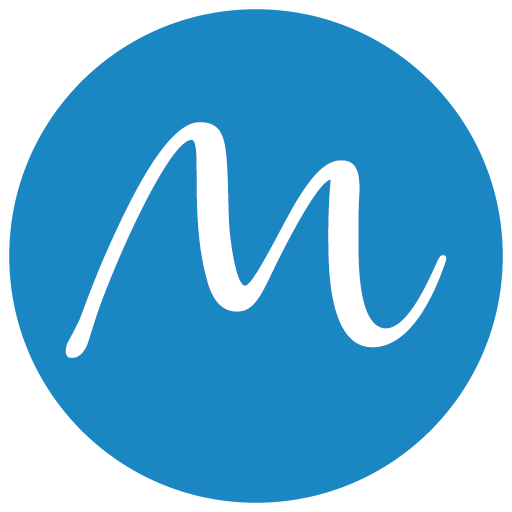Museo del Oro is a popular gold museum in Bogotá with a collection of over 50,000 pieces. This museum is one of the most visited tourist sites in Colombia. This gold museum reportedly receives about 650,000 visitors per year.
The museum is home to one of the largest collections of gold artifacts in the world, which were crafted by artisans in pre-Columbian cultures. The museum also has pottery, stone, shell, wood and textile objects on display. In addition, the exhibits have bilingual descriptions in Spanish and English.
We previously covered the best museums in Medellín and several readers asked about the best museums in other cities in Colombia. So, we plan to look at some of the best museums in other cities in Colombia. Note that three of the above photos are by Reg Natarajan.
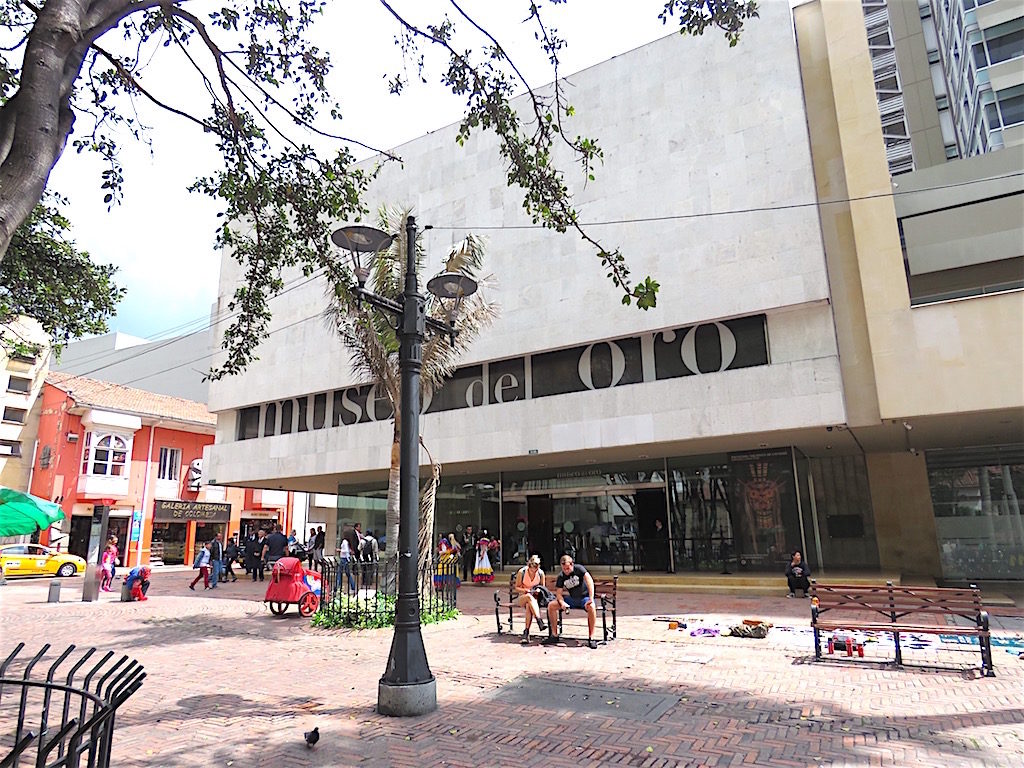
Museo del Oro in Bogotá
History of Museo del Oro
In 1934, Banco de la República (Bank of the Republic) began to collect pre-Columbian items to help protect the archaeological patrimony of Colombia.
The object known as Quimbaya Poporo was the first in the collection. It is one of the most recognized pre-Columbian pieces in the collection.
This relatively unassuming bulbous vase with four tennis ball sized spheres at the top, was used as a religious ceremonial device. It was purchased in 1939 by Banco de la República, after a private collector decided to sell it. The 1,800-year-old object was almost melted down until someone decided to establish the current museum.
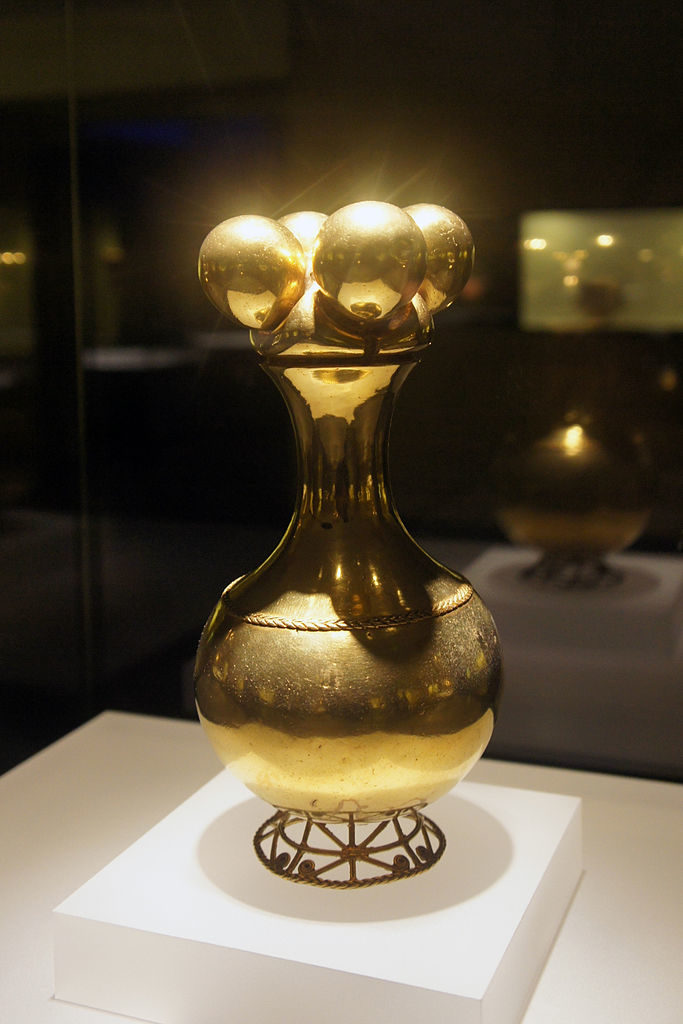
The Quimbaya Poporo found in Antioquia in the 19th century, from the Mid-Cauca Region – Quimbaya 500 B.C to 700 A.D., photo by Mario Roberto Durán Ortiz
The collection’s founding mission was to save gold objects from destruction for their value in gold weight as well as saving objects found by grave robbers, which were being exported illegally.
The museum never envisioned that the collection would grow to about 32,000 gold artifacts with over 20,000 more objects made from alloys and other materials.
The gold collection was first displayed for almost three decades at the Republican building Pedro A. López in Bogotá. But there was no space for a workforce at this location to study the artifacts. It was just for display. So, in 1968, the current building opened with additional educational, scientific and conservation objectives.

Muisca raft – depicts the ceremony of investiture of the Muisca chief, which used to take place at Lake Guatavita – raft was found by three farmers in early 1969, photo by Reg Natarajan
in 2018, National Geographic magazine even named this museum as one of the best museums in the world.
In addition to the Museo del Oro museum in Bogotá, Banco de la Republica has six other museums located in Armenia, Cali, Cartagena, Leticia, Pasto and Santa Marta, which are used to display its large collection.

A gold mask, photo by Reg Natarajan
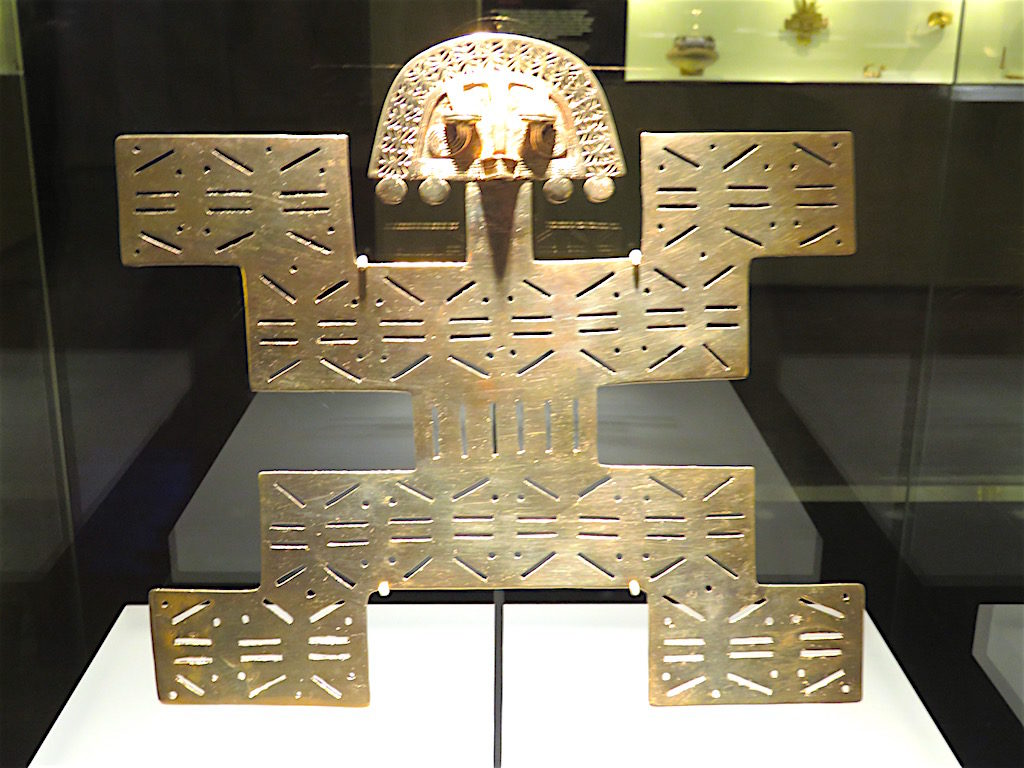
Anthropo-Zoomorphic breastplate, Magdalena Valley – Tolima, 1 to 700 A.D.
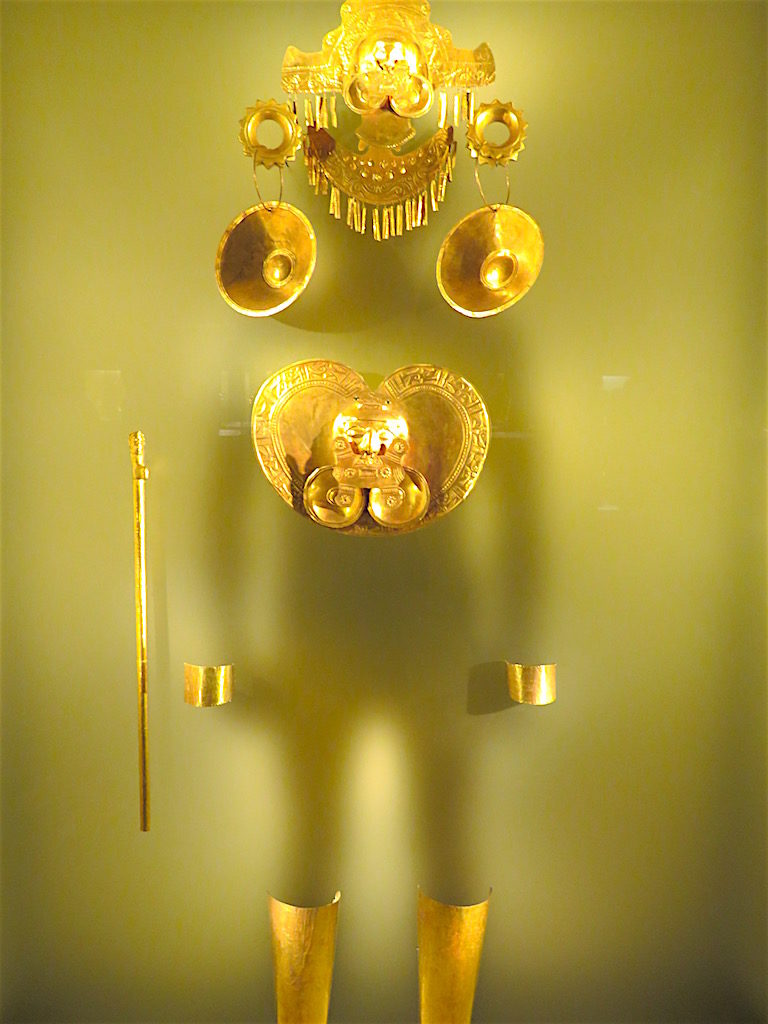
Gold was worn by pre-Columbian cultures

One of the many gold artifacts on display in the museum

Another of the many gold artifacts on display
More About the Museum
We recommend spending at least 1.5 hours in this museum. But there is enough to see that you could easily spend at least two to four hours here, particularly if you use the audio guide or go on a guided tour.
The permanent exhibition in the museum is divided into 12 different corridors for each distinctive culture. These include Calima, Cauca, Chocó, Malagana, Muisca, Nariño, Quimbaya, San Agustin, Tairona, Tierraadentro, Tolima, Tumaco, Uraba and Zenu.
The exhibits in the museum are located on three floors. On the second floor, there is a metal work room that shows the mining and manufacturing techniques of ancient metallurgy. Also, on the second floor is a room displaying the people and gold in pre-Hispanic Colombia.
On the third floor is a Cosmology and Symbolism room, which explores the mythical themes, shamanism and metal symbolism. In addition, on the third floor is an offering room that immerses the visitor in the world of offering ceremonies.
Finally, on the fourth floor is the Exploratory, which is a room that promotes interactivity and reflection around the diversity and meaning of the heritage that the museum preserves. Also, there is a gift shop and café in the museum.
Museo del Oro Entrance Fees
The entrance fee depends on your age and the day of the week:
- Tuesday to Saturday: 4,000 pesos.
- Sunday: Free and free on May 18, July 20 and August 7.
- Monday and major holidays: Closed.
- Free for children less than 12 years-old and adults over 60 years-old.
In addition, at the ticket office rental audio guides are available for 8,000 pesos in Spanish, English, French and Portuguese with permit you to tour the permanent rooms at your own pace.
Furthermore, Museo del Oro offers guided tours included in the entrance fee at the following times:
From Tuesday to Friday:
- In Spanish: 11:00 am, 3:00 and 4:00 pm.
- In English: 11:00 am and 4:00 pm
Saturdays:
- In Spanish: 10:00 and 11:00 am, 3:00 and 4:00 pm
- In English: 11:00 am. and 4:00 pm
In addition, only non-flash photography and video is permitted in the museum.

Seven sheets of gold pressed onto a sea snail, Calimo Region, Yotoco Period, 200 B.C to 1300 A.D.
How to Get to Museo del Oro
The Gold Museum is located next to Parque Santander in Bogotá and is five blocks from Bolívar Square.
Every taxi driver in Bogotá will know how to get to Museo del Oro, as it’s a very popular tourist attraction in Bogotá.
Website: https://www.banrepcultural.org/bogota/museo-del-oro
Address: Carrera 6 # 15-88, Bogotá
Telephone: +57 1 343 2222
Hours: Tuesday to Saturday: 9:00 am to 7:00 pm; Sunday: 10:00 am to 5 pm; Monday and major holidays: Closed.
Museums in Medellín
On the Medellin Guru website, we have looked at 17 different museums in Medellín:
- Museo de Antioquia – the most popular museum in Medellín, worth visiting. It’s best known for a collection of art of Medellín-born artist Fernando Botero.
- Medellín’s Museo de Arte Moderno (Modern Art Museum) – worth a visit with an intriguing mix of exhibitions located in a striking building.
- Parque Explora – Medellín’s popular interactive science museum and aquarium. It has over 300 activities and the largest freshwater aquarium in South America.
- Jardín Botánico – Medellín’s free botanical gardens that is also considered a museum with over 1,000 different living plants on display.
- Planetario de Medellín – Medellín’s Planetarium and space museum that is very popular and worth seeing, particularly with kids.
- Museo El Castillo – Medellín’s beautiful Gothic-style castle that is a museum.
- Museo Cementerio San Pedro – a cemetery that is also a popular museum in Medellín worth visiting. It also has a church with many beautiful stained-glass windows.
- Museo Casa de la Memoria – a museum dedicated to honoring the victims of urban conflict in Medellín and Colombia and is worth seeing to better understand the city and country.
- Museo del Agua– the popular Medellín water museum.
- Casa Museo Otraparte – a hidden gem in Envigado consisting of a museum, cultural space and café dedicated to the life and works of Colombian philosopher Fernando González.
- Museo Universidad Antioquia (MUUA) – a Medellín museum located on the University of Antioquia’s campus with a huge collection of nearly 40,000 archaeological and natural history pieces.
- Museo Casa Gardeliana – a museum located in Medellín that is dedicated to tango music and musician Carlos Gardel.
- Pedro Nel Gómez Casa Museo – a museum located in Aranjuez that is dedicated to the life and works of important Colombian artist Pedro Nel Gómez who is best known for his extensive work as a muralist.
- Museo Etnográfico Miguel Angel Builes – a hidden gem museum in Medellín dedicated to showing the cultural diversity of indigenous and ethnic groups in Colombia.
- Rafael Uribe Uribe Palace of Culture – Medellín’s palace in El Centro is one of the most photographed buildings in the city. It’s considered a museum by the city of Medellín but there aren’t very many exhibits to see inside.
- Museo Entomológico Piedras Blancas (MEPB) – an insect museum located at the Parque Ecológico Piedras Blancas, which is an ecological park located in Santa Elena near Medellín.
- Museo de Ciudad – Medellín’s City Museum, which is located next to Pueblito Paisa. This museum has a scale model of the city and a photo exhibit with photos from the 1890s to about 1950 showing the history of the city of Medellín.
The 10 English-language Colombia guidebooks that I have are missing several of these museums. And each guidebook only includes six to nine out of the 17 museums in Medellín we have looked at.
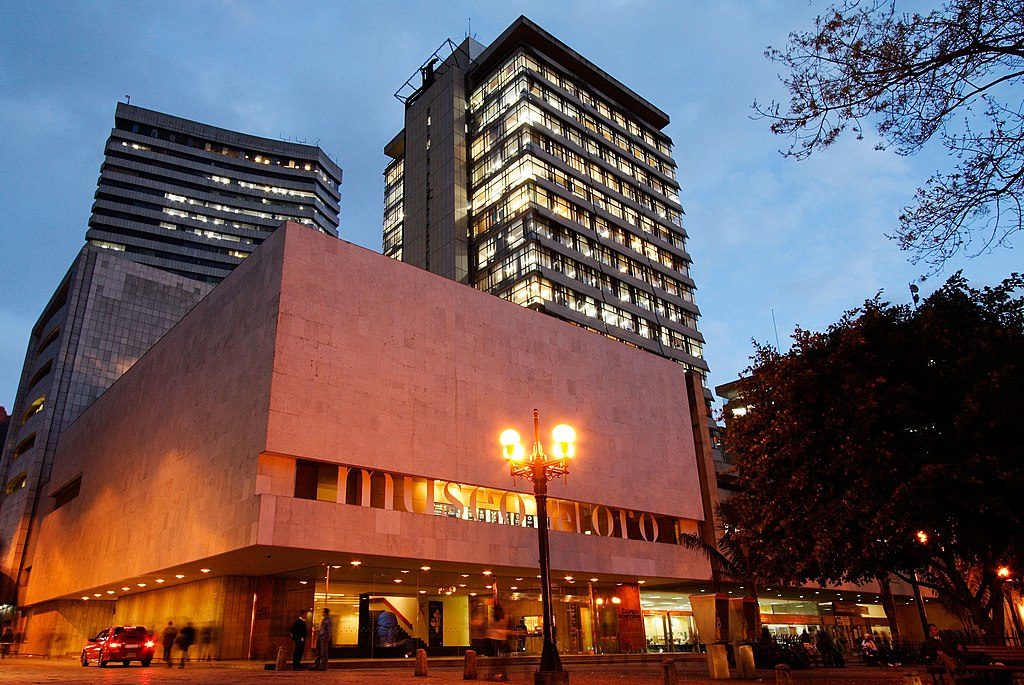
Museo del Oro at night, photo by Actividad Cultural Banco de la República
The Bottom Line: Museo del Oro in Bogotá
Museo del Oro has the largest collection of pre-Columbian gold artifacts in the world. This museum is considered a must-visit for tourists visiting Bogotá and we included this museum in our list of 15 top things to do in Bogotá.
This famous museum is definitely worth your time if you happen to be in Bogotá. In addition, we recommend not going on Sundays, which are very busy due to the museum being free on this day.
Sign up for the Free Medellin Guru Newsletter – You can see all of the previous Medellin Guru weekly email newsletters and sign up here.
